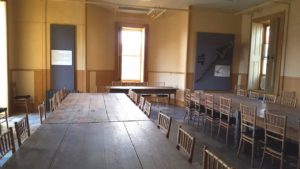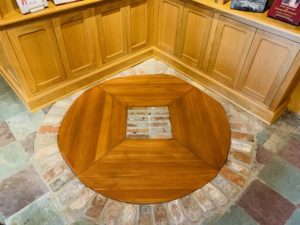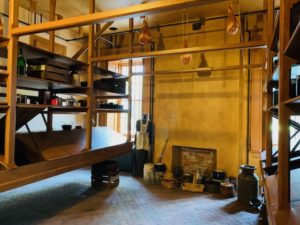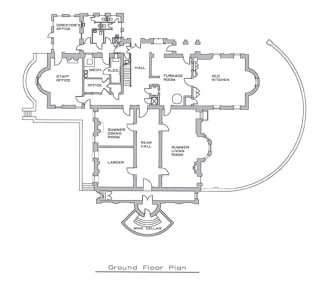Basement
 The old kitchen served the Johnston and Felton families as the primary kitchen from 1862-1926. Most antebellum kitchens were built separate from the main house due to the risk of fire. The Johnstons, however, utilized a slate stone floor in the kitchen to help prevent any house fires.
The old kitchen served the Johnston and Felton families as the primary kitchen from 1862-1926. Most antebellum kitchens were built separate from the main house due to the risk of fire. The Johnstons, however, utilized a slate stone floor in the kitchen to help prevent any house fires.
 The scullery was the room used to wash and possibly store pots, pans, and other kitchen utensils. Another interesting feature in this space is the furnace pit. Many details of how the furnace looked or operated are unclear. We do know that the furnace provided central heating and hot water for the bathrooms on the third floor.
The scullery was the room used to wash and possibly store pots, pans, and other kitchen utensils. Another interesting feature in this space is the furnace pit. Many details of how the furnace looked or operated are unclear. We do know that the furnace provided central heating and hot water for the bathrooms on the third floor.
 The larder or pantry was used for dry food storage for the Johnston and Felton families. Shelves and bins are suspended from the ceiling and do not touch the walls to prevent vermin from spoiling the stored food.
The larder or pantry was used for dry food storage for the Johnston and Felton families. Shelves and bins are suspended from the ceiling and do not touch the walls to prevent vermin from spoiling the stored food.
Although guests rarely, if ever, saw the rooms downstairs, the decorative finishes in the basement were not spared. Ornate plaster work, custom cabinetry, wood graining, and faux finishes similar to more public rooms of the house can be found on the lower level. Living areas on this floor included a summer dining room, bedroom (staff offices), and parlor (exhibit room). In addition, a critical component of the built-in ventilation system is the wind tunnel which is located at the end of the ground level hall by the wine cellar.

